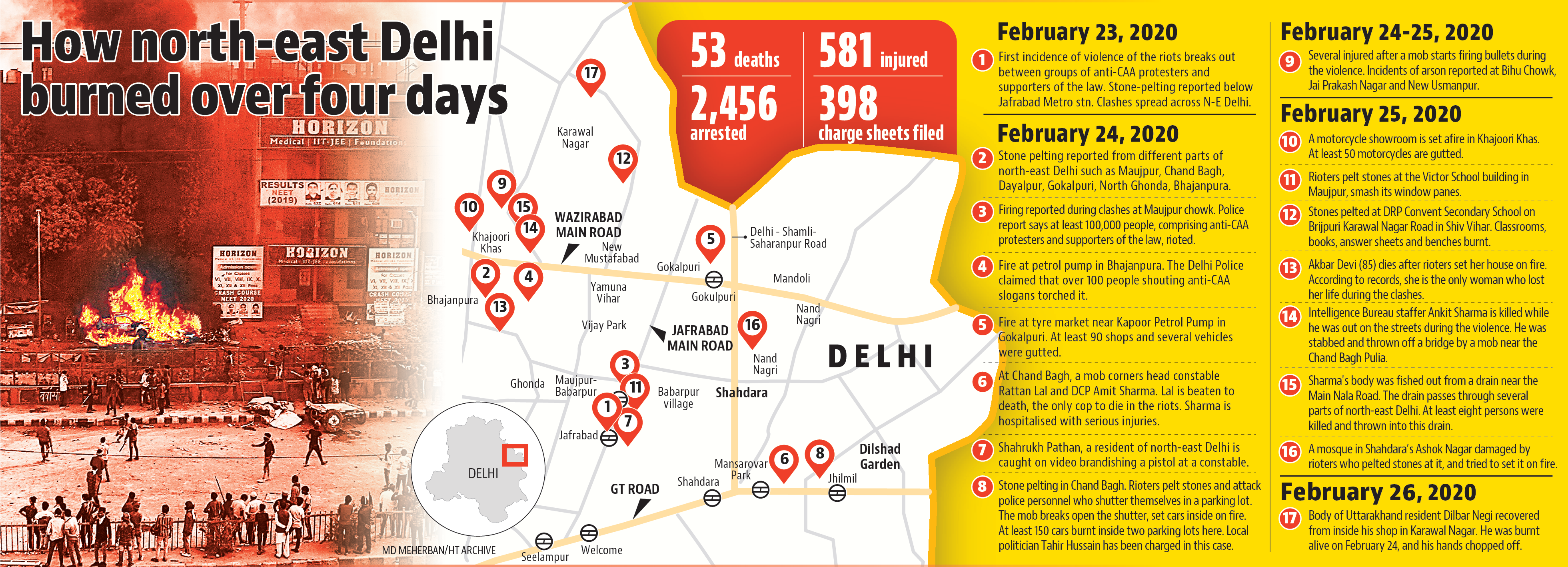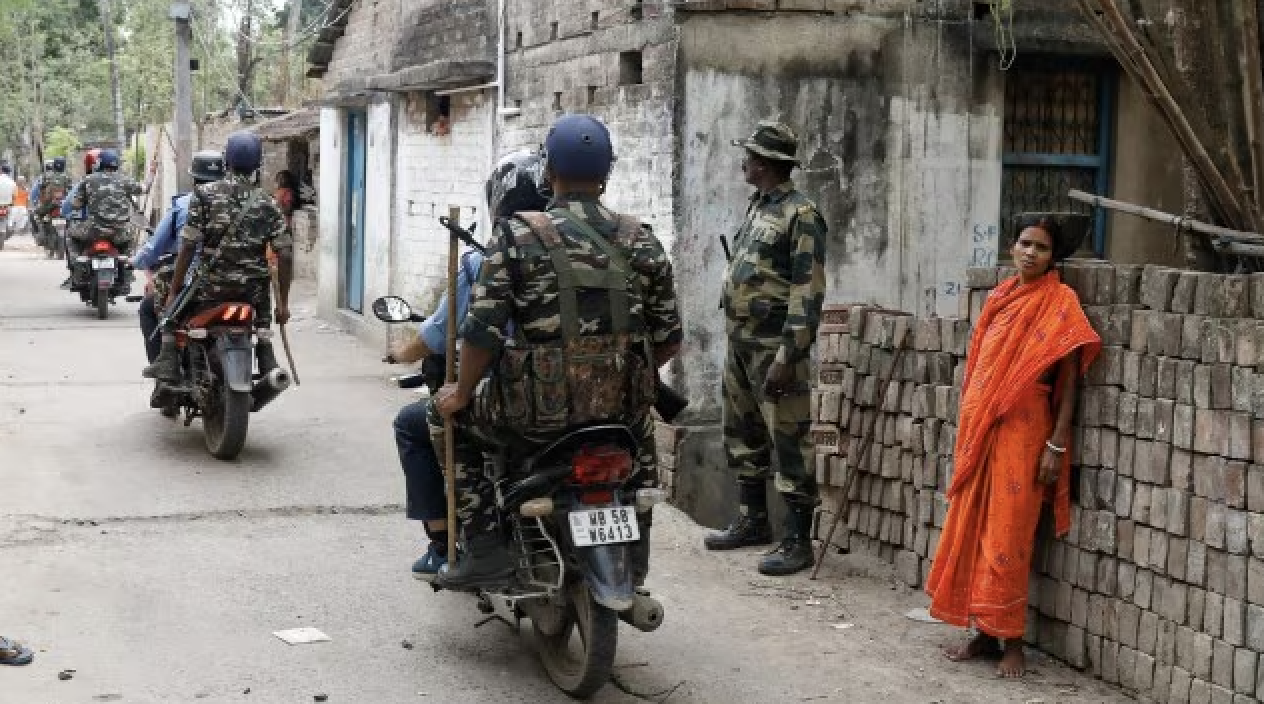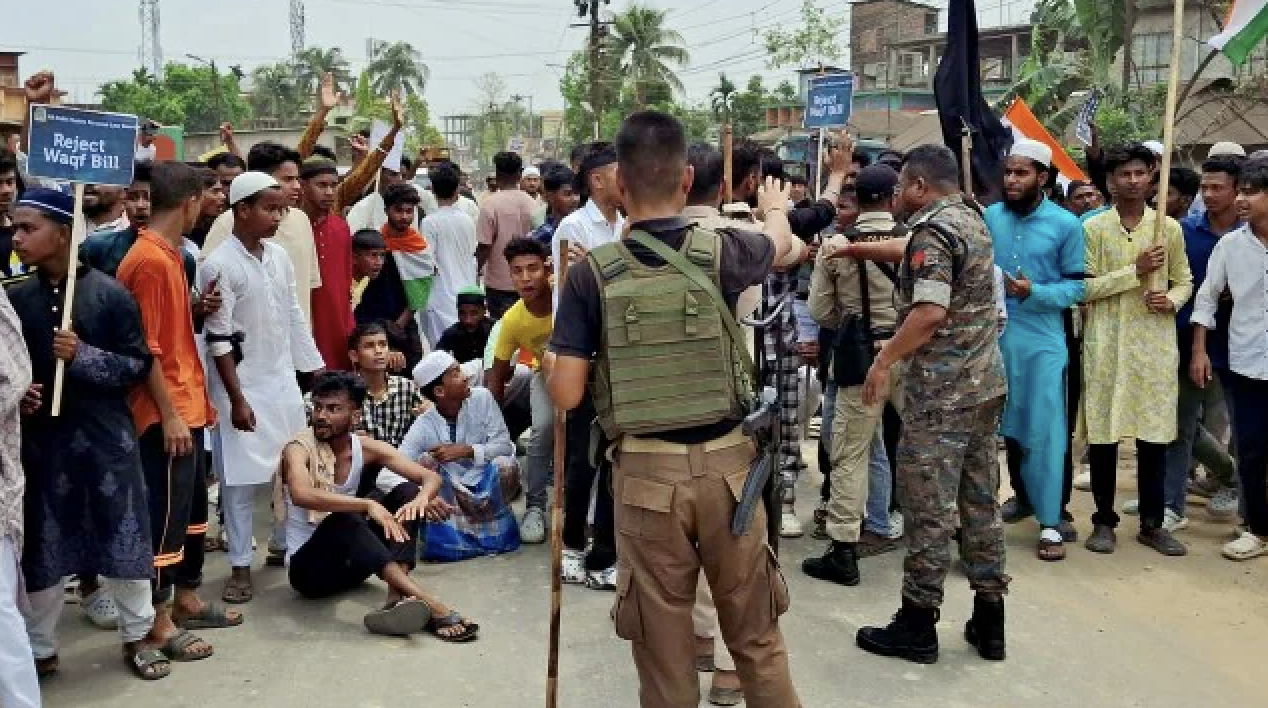
On the evening of February 25, 2020 a mob torched the house of Manori (who goes by a single name) in Bhagirathi Vihar, and took away the buffalo her grandson had just bought.
On January 20 this year, a Delhi court convicted 25-year-old Dinesh Yadav alias Michael, the only suspect identified and arrested in Manori’s case, and sentenced him to jail for five years. So far, Manori is the only victim in the Delhi riots of that year to get justice.
Two years after communal violence ravaged parts of north-east Delhi, claiming 53 lives and leaving 581 persons injured, Yadav’s was only the second conviction that the city police have secured; the police have registered 758 cases that are being investigated by the local police, and specialised units such as the crime branch and special cell. Among the 53 dead were Delhi Police head constable Rattan Lal and Intelligence Bureau (IB) officer Ankit Sharma.
According to data shared on Wednesday by Delhi Police with HT, of the 758 cases, 440 have been solved and 2,456 people have been arrested so far. Police have filed charge sheets in nearly 52% of the cases (in 398 cases) against 1,610 arrested persons – 798 Hindus and 812 Muslims. Four special courts that were constituted to fast track the trial of the riots cases have so far taken cognisance in 338 cases. Arguments are in progress in 170 cases and charges have been framed in 100 cases, Delhi Police spokesperson Chinmoy Biswal said on Wednesday.
 Image courtesy: HT
Image courtesy: HT
The first sentencing in the north-east Delhi riots cases happened on December 17, 2021, when a city court convicted and let off Kaleem Ahmed, who accepted his guilt of harbouring Shahrukh Pathan,who appeared in one of the defining images of the riots that started on February 23, 2020 and went on for four days, after a video clip of him casually pointing a pistol at a policeman went viral.
The clashes in north-east Delhi had coincided with the visit of then US president Donald Trump. As the police control room continued to receive information about incidents of violence in north east Delhi, the Union Home Ministry on February 25 brought in senior police officer SN Shrivastava from the CRPF to control the riots. Delhi’s then police commissioner was Amulya Patnaik. Shrivastava was appointed interim police commissioner on March 1.
Of the 53 deaths, the police have still not been able to solve 15 , since the suspects have not been identified, according to the police. All the murder cases are being investigated by three special investigation teams (SITs) of the crime branch. One case pertaining to a larger conspiracy is being investigated by the special cell that has arrested and charged 21 people.
The SITs have been probing 62 cases of which 47 have been solved while charges have been filed (and cognisance been taken of them) in 45. None of the solved murder cases has reached conviction stage till date. The northeast district police are investigating 695 cases.
On being asked why almost 42% cases (318), including the 15 murders, remain unsolved even after two years, senior police officers associated with the probe said that “motivated complaints, lack of evidence, and unclear information about the location of the crimes and the suspects” are the prime reasons. Witnesses not coming forward to record their statements or refusing to join the probe after recording their statements were other reasons behind the pendency of the cases, the officers said, asking not to be named.
“Since camps were organised for receiving complaints and compensation was announced by the government, many people lodged their complaints after a week or two after the riots, but without any supporting evidence such as witnesses or electronic evidence. All the complaints were converted into first information reports (FIRs) but no leads could be found in the cases,” said deputy commissioner of police (northeast) Sanjay Kumar Sain.
Although investigations into the unsolved cases are still continuing, the officers said that they may move applications before the concerned court for cancellation of some in which a breakthrough is unlikely.
An investigator from the northeast district police team said that more than 100 suspects were identified and arrested with the help of the facial recognition system (FRS), a technology capable of matching a human face from a digital image or a video footage. To identify the remaining suspects, police relied on video footage they got from CCTVs installed in the riots-affected areas and videos captured on cellphones by people.
“Extensive advertisements and announcements were made, asking people to share videos and photos related to the violence. The identities of many witnesses have been kept secret keeping in mind their safety and security,” the investigator added, asking not to be named.
The city police said that 14 special public prosecutors and six law officers, including the Solicitor General of India and three Additional Solicitor Generals of India, have also been appointed as special public prosecutors to ensure proper assistance to the courts during trial.
This article first appeared on hindustantimes.com






